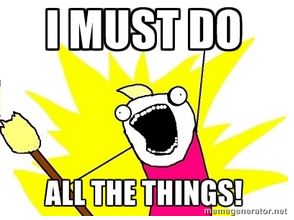Does your READY column look like a junk drawer?
Do you have tasks in there that you are holding onto from six months ago that say “Urgent!” (and have since the day they were created)?
Guess what? You’re learning something about your work.
We have a lot of urgent tasks that strangely don’t get done and no one gets hurt.
We might miss an opportunity or need to do something different in the future, but we don’t complete a lot of tasks we, ourselves, would describe as urgent.In the first post in this series, I mentioned that at Modus our board had built up an unhealthy backlog. It was gigantic.Why did this happen?1. We’re busy! Tonianne and I were traveling constantly, forming partnerships, coming up with new products, working on existing products, keeping notes about things to blog about, juggling demands from clients, and running a business. We were both constantly adding to the board. So much so, Tonianne at one point created a backlog just for her because she couldn’t find things on the board. Busy-ness was becoming bad for business.
2. No custodian No one was in charge of cleaning out the backlog, so even though we are both focused on the board, we became focused on completion - but not hygiene.
3. Focused on the new work As I mentioned we were focused on completion. We would put new urgent work into the board and do it immediately, while old tasks just got older. We needed to maintain a focus, again, on board hygieneSo what to do?Well, we can either clean them up or work them out.Cleaning I took on the role of custodian and started clearing out old, poorly described, or simply unnecessary. After that, and the backlog regrooming from the previous post, we were able to see all our work and begin to actually complete. When discussing the board, we now talk about old tickets and why certain tickets are there.Batching If there are tickets that really are important, but haven’t been done, we might suggest a pomodoro or two to focus on completing just those tasks, clean them off the board, and move on.This is important because often tickets that languish are of a certain type. They involve writing tedious emails or calling people on the phone, for example. Batching those up and completing them also is a good way to get them out of the backlog.This is the third post in the series - Are You Just Doing Things. You can read the previous post here.Written in Mesa, Arizona















